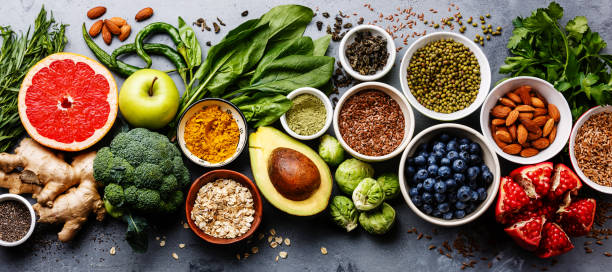“We can’t have a standard protein intake for all segments of people in India because their choices, perception and psychology of food depend mostly on their income levels” – Dr. Narasimha Reddy, Paediatrician & Founder of Roligt Foods Pvt Ltd
A Paediatrician and Neonatologist by profession, Dr. Narasimha Reddy Basani, along with his dermatologist-wife Dr. Shilpa Reddy, founded Roligt Foods Pvt Ltd., with the belief that access to healthy and sustainable food is every individual’s right. A Swedish word, ‘roligt’ means ‘fun’ and the company aims to make healthy food fun.

Roligt Foods launched its own brand of beverages – CocoWorks in 2019, to bridge the growing nutrient gap among urban populace. Based in Hyderabad, CocoWorks offers bottled tender coconut water and also cold pressed juices (blended with coconut water and sweetened with organic honey) in varied flavours: The Dark Knight (dark chocolate), Go Guava Gone (guava), Carronut (carrots), Juzz Beet It (beetroot), Pinacolada (pineapple), Activated Charcoal Lemonde and Cold Brew Coffee (coffee and maple syrup) – to name a few. The coconuts, fruits and vegetables used in CocoWorks’ products are ethically-sourced and free from preservatives, added sugar, flavours and banned fertilisers/pesticides.
But, why coconut water? Because it’s a fundamental source that allows us to create multiple products and everything coming out of coconuts is healthy. Coconut water can be consumed by anyone in any age group and in any condition, due to the availability of nutrients like electrolytes, proteins, healthy fats, vitamins and minerals.

“Not everyone pays consistent attention to one’s nutrition; it’s only after falling sick that we are forced to focus on it. This, in turn, is leading to serious protein deficiency among Indians, thereby resulting in long-term health risks. In a nutshell, nutrition has become a luxury for Indians nowadays – blame it on our hectic lifestyles, stress, socio-economic imbalances and such other issues,” Narasimha Reddy states.
In a conversation with Ayuve – Narasimha Reddy throws light on the nutritional aspects of dairy and dairy alternatives, protein sources and the status of protein consumption in India.
Malnutrition
Malnutrition and protein deficiency usually take 2-3 years to show visible changes in one’s body. In children, they have long-term effects like stunting (impaired growth and inadequate psychosocial stimulation), frequent infections and poor body muscle. In case of adults, it is associated with lesser body mass index, metabolic changes and immune-compromise status (rise in non-communicable diseases).
Of all Indian states, Telangana has improved a lot due to implementation of government welfare schemes and campaigns aimed for pregnant and lactating women. NGOs like Akshaya Patra Foundation are also doing a wonderful job in fulfilling the nutritional needs of children studying at government schools.
However, in urban areas, perception of people is quite different – they like to indulge in fast food; they prefer a cup cake to fruits or smoothie. Availability plays a vital role here – unlike the situation about two decades ago, people can feast on anything today, every day.
With everything being available round-the-clock and 365 days, the craving for good food is lost. More the choices, more the confusion for consumers to pick safe food! Even as the thin line between good food and healthy food is slowly diminishing, we can’t expect the lower income groups to eat meats and high protein food consistently. Hence, we can’t have a standard protein intake for all segments of people in India because their choices, perception and psychology of food depend mostly on their income levels.

Bio-availability of Protein
Protein intake differs for vegetarians and non-vegetarians. When it comes to average Indians, not everyone can afford to buy non-vegetarian food like meat, fish, etc. Though good protein sources are available in vegetarian food like cereals, legumes and millets, people don’t give much thought to the intake, but are mostly concerned with variety. This is all due to lack of awareness about proteins, carbohydrates, calories or nutrition.
However, things have changed in the recent past, particularly post-Covid-19 pandemic. More people, especially in urban areas, have grown conscious towards healthy food and nourishment. They are assessing the nutritional literature of brands they’re buying and making conscious efforts to eat and stay healthy. Despite this, India is very behind in terms of protein deficiency and malnutrition.
Adulteration
The quality of protein changes with the source. Needless to say, food adulteration has turned out to be a huge problem in India. It can’t be denied that the food we’re consuming today is being grown using banned fertilisers and harmful chemicals. Even after procurement of the produce, there are several ways to adulterate a food product. We can’t expect quality and safe food when we can’t support the farmers and other stakeholders involved in the system.
Taste Matters
It’s taste that drives our eating habits. For example, butter is consumed heavily in Gujarat than any other Indian states. Now, in South India, butter found its way into our breakfasts – dosas and idlis. Nutrition is not food and there is a huge difference between taste and nutrition.
Not many evince interest in protein, unless the food is tasty. For example, millets are high in protein content but they’ve few takers. Though India is one of the world’s largest producers of millets, the domestic consumption is far less due to poor marketing system and support from the governments.
It is easy for hundreds of companies to sell indulgent food like a cupcake for Rs 100, but it becomes a difficult task for a brand to sell millets for Rs 60 per kg. It’s because of their psychology. And this is how brands have evolved over the years in terms of reaching out to their customers. Few sensible enterprises are talking about nutritional awareness, though.
However, it can’t be denied that every company wants to make money. But, what matters more is their choice – do they want to make money by making the nation healthy or sick. A healthy brand or nutrition source can never win over an unhealthy brand, unless and until there are strict policy decisions in place.
Dietary Supplements

Many factors decide the protein content in the dietary supplements like the source (whey, vegan and animal-derived), refining and protein extraction processes. In South America and the UK, Acheta protein (derived from crickets) has become one of the most cheapest and sustainable protein to be derived from an animal source.
It is touted to contain all essential amino acids and more iron than spinach. The protein quotient, too, is high when compared with beef, salmon, chicken or egg. But, Indians won’t consume it because of our inhibitions. So, establishing a common nutrition segment for everyone is a challenging task, taken up recently by organisations like National Institute of Nutrition and ICAR.
Dairy Alternatives
There are various types of proteins like milk protein. However, many are allergic to milk, per se. Children can digest lactose and milk solids until the age of 4-5 years, but adults can’t, because our bodies stop producing the enzymes needed to digest any animal-derived protein. What’s the use of consuming milk when our bodies can’t digest? It’s just that having milk for absorbing calcium has become a fundamental belief for us all, thanks to decades of marketing and we don’t question it.
The calcium absorbed and the amount of milk solids assimilated in our bodies are still questionable. This is the case with curd, too, which is known as for its probiotic enzymes. Like mother’s milk is for babies, cow’s milk is for calves and not for humans. There are multiple sources in vegetarian foods like spinach, which provide ample calcium. However, not even a single enterprise in India campaigns about spinach as one of the cheap-and-best sources of calcium.

Several UK-based studies and a recent one by China also confirmed that milk is affecting multiple organs in our bodies, by way of inflammation. But, such studies never see the light in India due to our policies towards dairy industry. We are consciously depriving the consumer of making an informed choice.
Nevertheless, in view of the growing cases of lactose intolerance and other reasons, people are turning to dairy alternatives like soy milk, cashew milk, almond milk, oat milk, coconut milk, etc. This is really a welcome change. But again, there’s no need to vigorously promote these dairy-free brands as the healthiest options when in reality, only 1 out of 100 people suffering from deficiency need these alternatives. So, it’s better to have teas and coffees without adding milk. Besides, there’s no point in consuming these dairy alternatives when they have preservatives or synthetic flavours.
Marketing & Consumer Consciousness
In India, predatory marketing is rampant from several years. A balanced Indian diet offers daily essential nutrients. But, we prefer to consume a so-called health drink to get Vitamin C and phytonutrients instead of eating citrus fruits. A smoothie made from milk has 600-800 calories, which an F&B brand never reveals. But, with more people eating out due to various reasons, our nutrition intake underwent a lot of changes. It’s OK to eat out once in a week, but definitely not, if this becomes a regular habit. We won’t buy it if we know about the number of calories it has and the ill-effects these empty calories have on our health.

Trend foods are those fancy things that we should be avoiding – they are mostly unsustainable ways of eating. There’s no point in a person feasting on a ‘Bahubali Thali’ when it should be shared by 3-4 people. But, the concept gives more mileage to the eateries or organisers on social media.
Good food is never marketed and a conscious customer should question these irrational food trends, promotional strategies, wrongful indulgences and quick fixes. We should think about long-term effects. This is possible only through nutrition label, which helps create awareness among consumers on safe food and protein intake.







